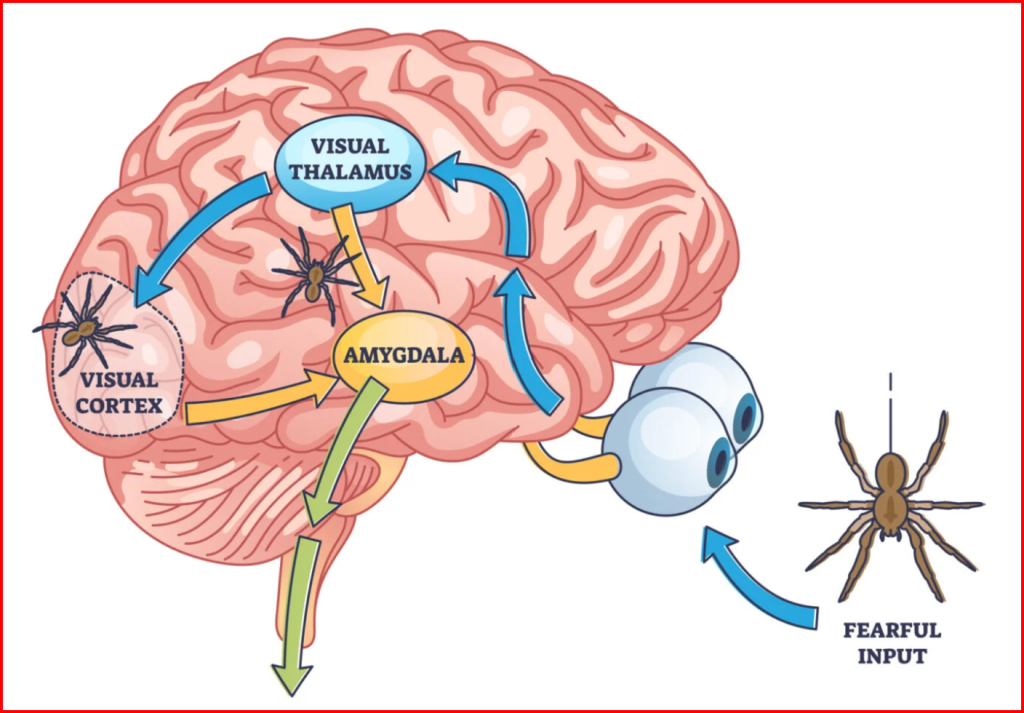How the brain works when processing anxiety.
Two main brain parts are involved.
First part is the Amygdala – emotional memories and emergency events are stored here.
Second part is the Prefrontal cortex – Where logic is processed.
The brains job is to protect us.
Follow the path from sighting the spider, to the Visual Thalamus to the Visual cortex and the Amygdala down to the body systems. This is typical of when our eyes see something that registers in the Amygdala (our emotional memory bank) as an emergency causing anxiety to build up.

This is just one of the approximately 400 instinctive reactions we are born with.
Notice that when seeing a spider, the logical processor, the Pre-frontal Cortex is bypassed.
The Amygdala gets the perceived danger signal and sends the signal straight to the body instructing it to spring into action. There is no time to check on whether the spider is dangerous or not.
We react first and ask questions later.
The Amygdala does not respect time.
If the eyes detect a situation that is similar to the events the Amygdala has stored in its data bank of dangerous situations, it thinks that the event is happening again and alerts the body of the danger, even if there is no current danger. Basically, we tell ourselves a lie in a fraction of a second by firing off emergency messages to the body, even though the original event might have been years ago. The reaction feels like it’s happening here and now, and the Pre-Frontal Cortex may even go off-line as is often the case with PTSD.
The prefrontal cortex is involved in many brain functions. One of the most important is the executive function, or the ability to self-regulate and plan ahead.
Recent research confirms that Prefrontal Cortex matures at about 30 years of age.
Examples of executive functions include:
- Controlling your behaviour and impulses
- Delaying instant gratification
- Regulating your emotions
- Planning
- Making decisions
- Solving problems
- Making long-term goals
- Balancing short-term rewards with future goals
- Changing your behaviour when situations change
- Seeing and predicting the consequences of your behaviour
- Being able to consider many streams of information
- Being able to focus your attention
The prefrontal cortex also affects your personality. A historical example of what happens when a person’s prefrontal cortex is damaged occurred in the mid-1800s when a railroad worker Phineas Gage’s prefrontal cortex was damaged by a metal rod going through his skull. He survived, but his personality changed. He became impulsive and lost the ability to plan.
How might we control anxiety?
- Notice the anxiety,
- Accept that it is happening,
- Acknowledge the feeling
- Tell yourself you are able to deal with the feeling.
Are you or someone you love prone to recurring anxiety?
Start your recovery journey today. Request an initial no obligation chat today.
